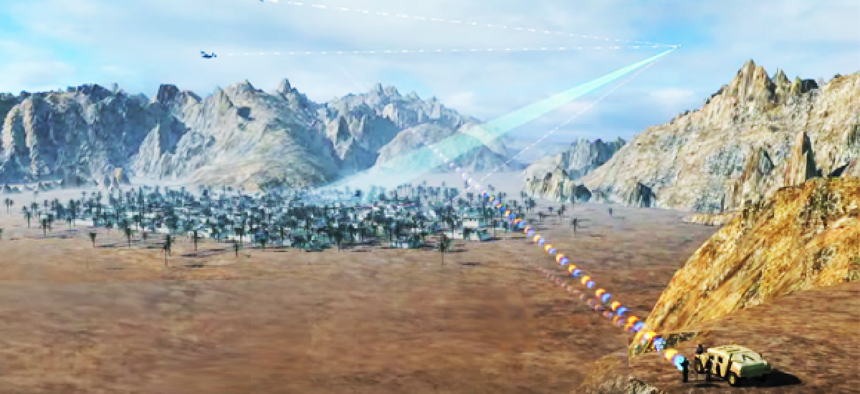Air-ground coordination lets soldiers call in air strikes from tablets


Connecting state and local government leaders
The Persistent Close Air Support prototype gives ground troops a way to coordinate with pilots to command an air strike with as few as three clicks.
Close air support is an artful yet extremely dangerous endeavor in which personnel on the ground call for and direct air strikes in support of combat operations.
Given that today's enemies can easily attack or move out of range before air strikes are coordinated, the Defense Advanced Research Projects Agency developed the Persistent Close Air Support prototype in 2010 to enable air and ground troops to share real-time situational awareness and weapons data. That collaboration between soldiers on the ground and pilots in the sky allows quick and positive identification of multiple targets at once, and targets can then be prioritized to fit mission goals and avoid unnecessary casualties.
During a recent demonstration at Nellis Air Force Base in Nevada, DARPA successfully tested the Persistent Close Air Support prototype using an A-10 Thunderbolt II aircraft.
PCAS consists of air and ground components that communicate to give soldiers greater situational awareness and better fire coordination. PCAS-Air, described as a platform-agnostic plug-and-play system, includes an internal navigation system, a weapons and engagement system, and a high-speed data transfer system with automated algorithms that recommend weapons and optimal travel routes to target.
PCAS-Ground components have already been tested on 500 Android tablets in Afghanistan with the goal of replacing paper maps and improving coordination and engagement of friendly close air support.
During the recent demonstration at Nellis, air and ground coordination was enabled by software that ran on a customized tablet and communicated with an automated targeting system aboard the A-10 Thunderbolt II. Tactical data links facilitated the sharing of information between the two platforms.
"Close air support and similar operations rely on teamwork, and we have shown that a flexible architecture and extensible technology tool sets are key to making groundbreaking improvements in air-ground coordination," said Dan Patt, a program manager in DARPA's Tactical Technology Office. "These and other test results suggest PCAS-like approaches have the potential to provide an unprecedented synchronized understanding of the active battlefield."
The tests at Nellis used a variant of the PCAS-Ground software developed by the Air Force Research Laboratory and the Special Operations Command, called the Android Tactical Assault Kit. According to DARPA, "ATAK is a situational awareness and targeting tool that has transitioned to thousands of individuals across the joint services."
Earlier this year, the Marine Corps tested a component of PCAS called the Kinetic Integrated Low-Cost Software Integrated Tactical Combat Handheld, which had been used in Iraq and Afghanistan. The test integrated KILSWITCH with MV-22 Ospreys, tilt-rotor aircraft with vertical take-off and landing. DARPA is also working with the Army on other PCAS activity involving ground forces and manned and unmanned aircraft.




